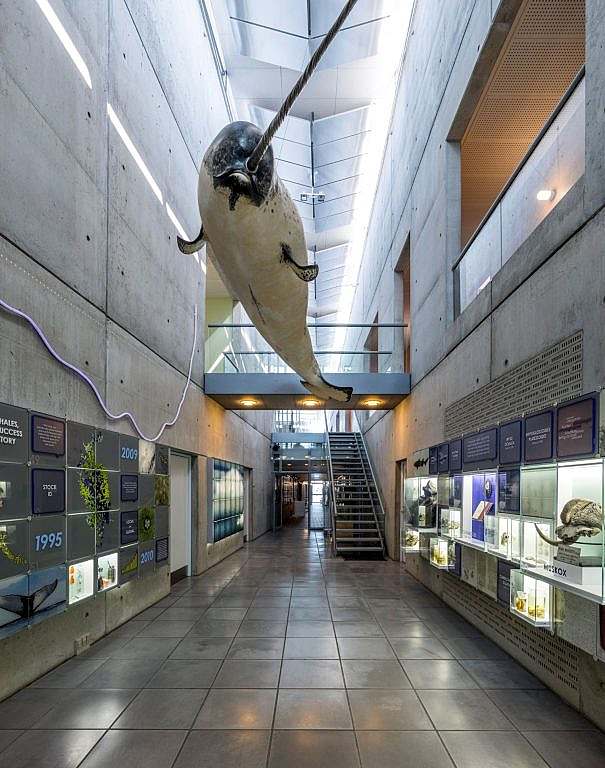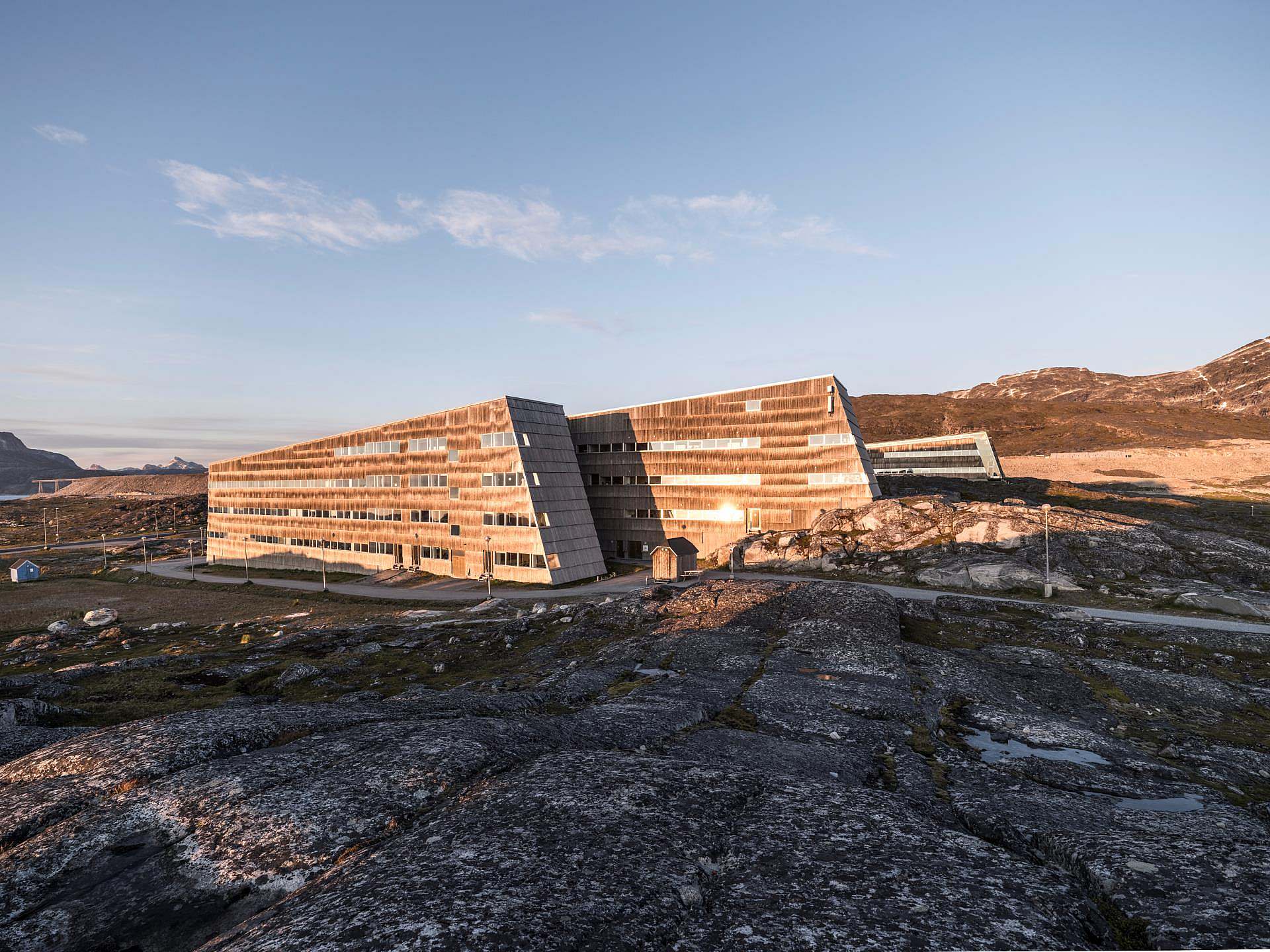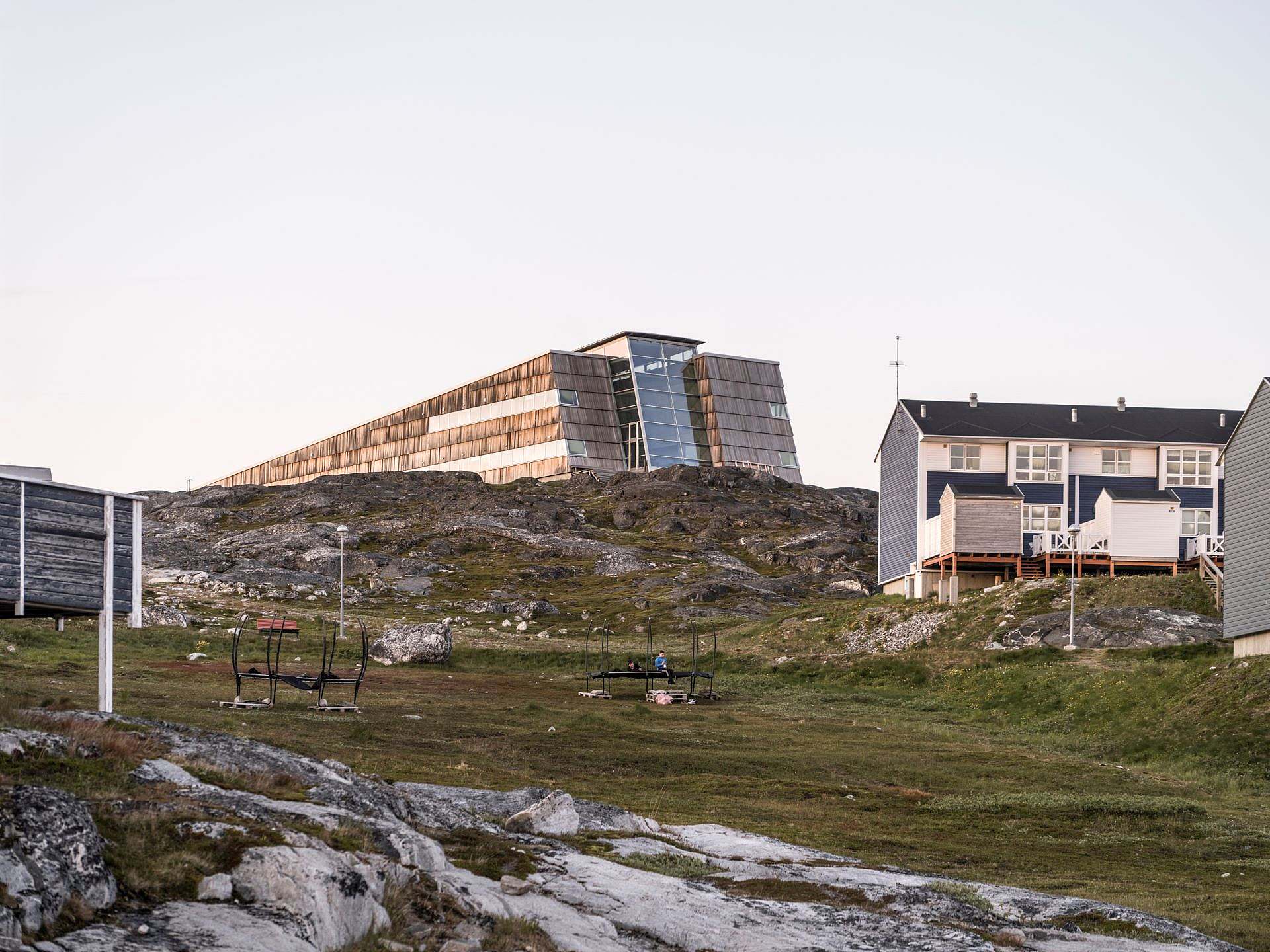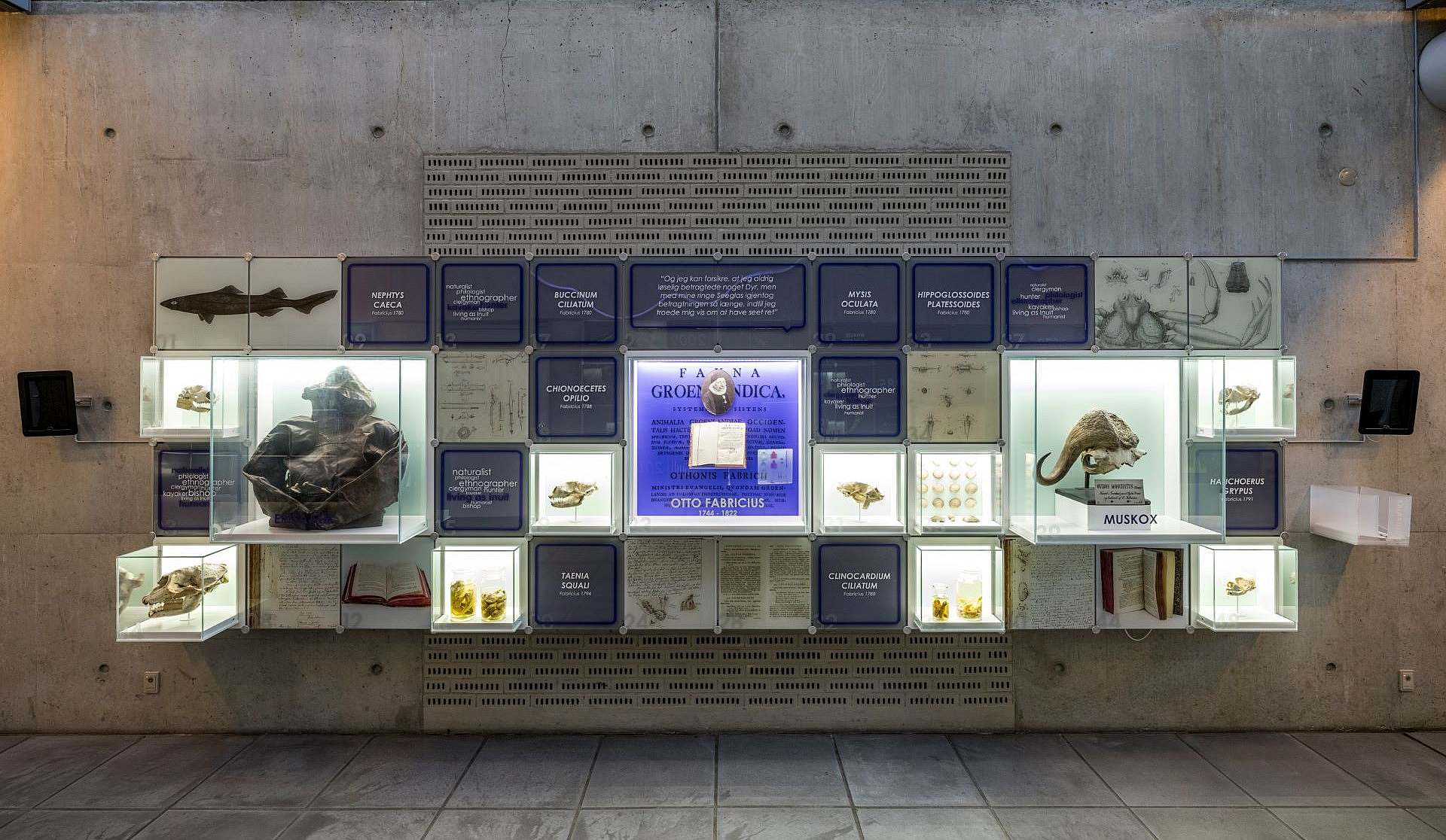The Greenland Institute of Natural Resources is located on a mountainside in the Siaqqinneq area outside Nuuk. It is a building that dares to stand out architecturally and at the same time insists on living together with nature. The institute is built with materials that age gracefully in the arctic climate and utilises the special arctic light conditions as an active element in the architecture.
Nuuk
Greenland
Greenland Home Rule
1998
2 000 ㎡
DKK 36M + 25M
Climate adapted construction, environmentally sound design

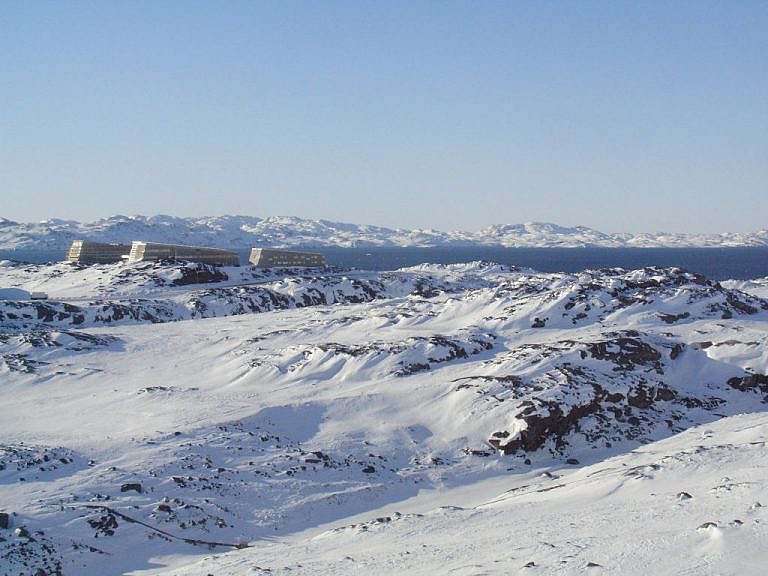
Arctic architecture
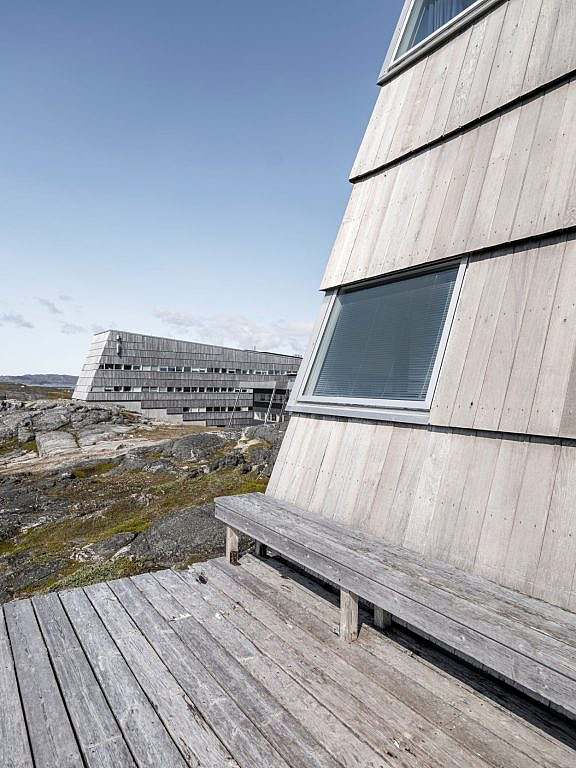
Architecture that catches the light and offers magnificent views
Inside, the house's fan shape evokes a crevasse, with the walls of the crevasse rising high on either side. The crevice opens to the south and offers a magnificent view through the glass façade, which invites the midday sun right into the middle of the room. Viewed from Nuuk, the south-facing glass room of the Natural History Institute is seen at night as a luminous landmark in the mountains.
In 2006, the Greenland Institute of Nature expanded by 820 m² to accommodate a new department dedicated to climate research, further strengthening the building's role as a centre for research and sustainability.
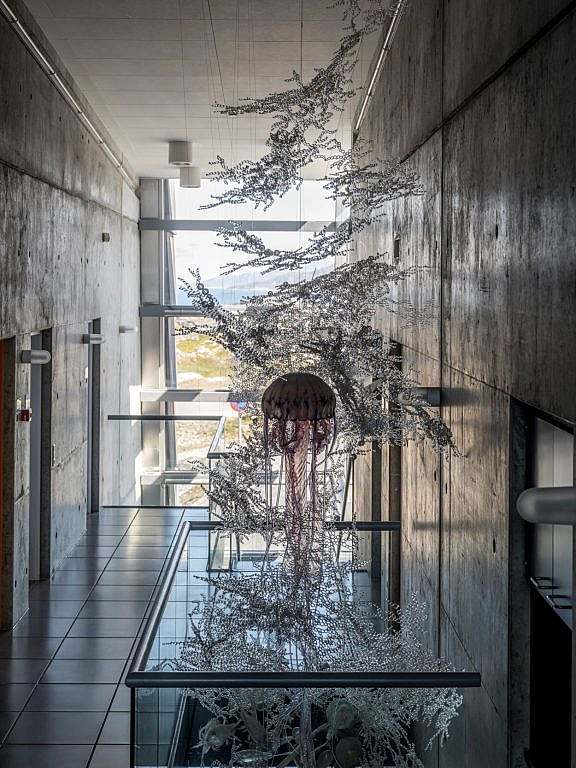
Sustainable architecture
The building is not only a place of work, but also a marker of Greenland's commitment to research and sustainability. It shows how architecture can support and visualise an important purpose while harmonising with its surroundings.
Like seals in the landscape
The Greenland Institute of Natural Resources spans almost 2,000 m² and consists of two parallel buildings running north-south. This placement is carefully aligned with the dominant wind directions of south-southeast and north-northwest to minimise wind resistance and reduce heat loss. The building blends into the landscape like a seal with its back to the wind and its flippers resting on the edge of the mountain, looking out over Nuuk and the magnificent fjord system.
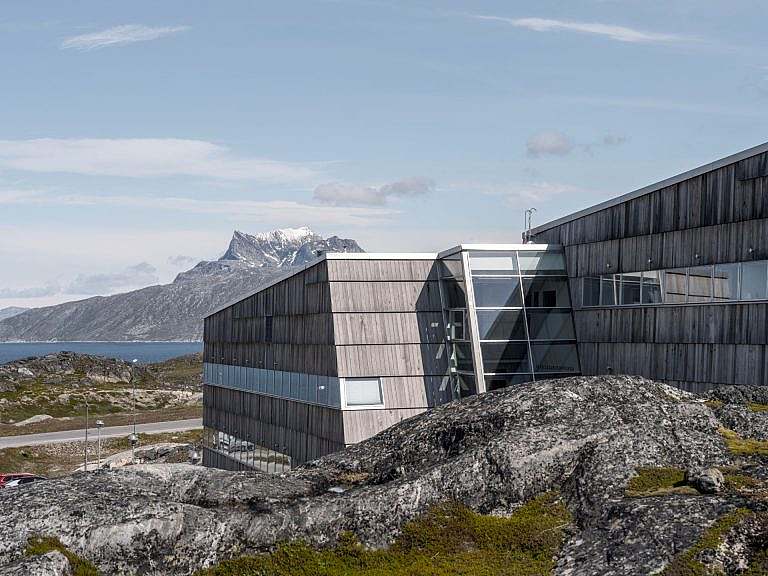
"The facade of the Nature Institute is clad with untreated Canadian cedar shavings, which in the dry climate take on a natural impregnation. Here, two decades later, the building stands in a beautiful silver-grey colour that really shows how important it is to choose the right materials for the Arctic climate."
Janina Zerbe, Architect
Contact

Arctic flora and fauna
Inside, the focus is on creating a flexible and inspiring work environment for researchers, with laboratories and offices connected by open communal areas. At the same time, large windows provide a sense of closeness to the surroundings, allowing users to constantly feel connected to the nature they work to understand and protect.
